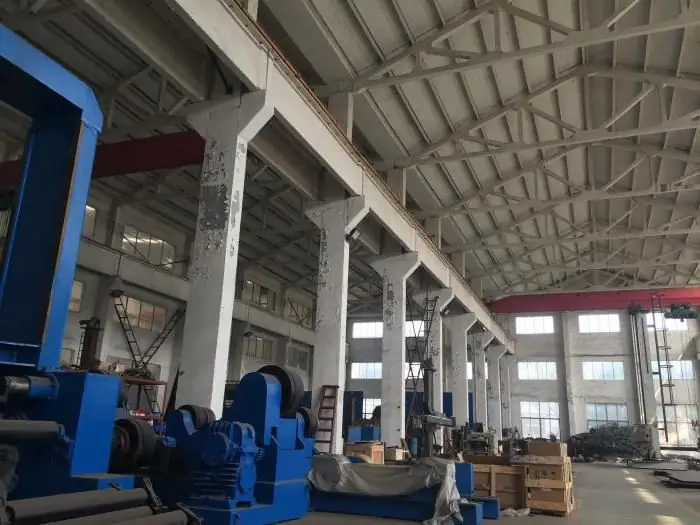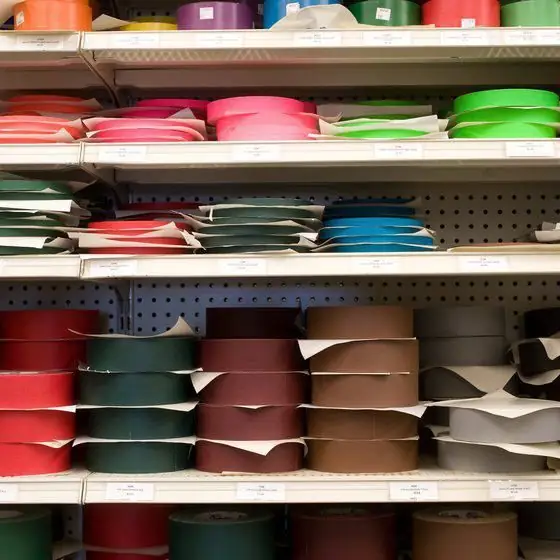2026 Author: Howard Calhoun | [email protected]. Last modified: 2025-01-24 13:10:37
The non-current assets of an enterprise play an important role in the production cycle, they are associated with logistics processes, trade, provision of services and many types of work. This type of assets allows the organization to earn income, but for this it is necessary to carefully analyze the composition, structure, cost of each object. Constant monitoring is carried out on the basis of accounting data, which must be reliable and correct. The main postings for fixed assets are typical, however, abnormal situations may occur in the course of work.
Fixed assets
Assets of the organization have a different cycle of turnover, i.e. the process of transferring their value to the price of manufactured products. Non-current fixed assets are classified as low-liquid, they are characterized bythe following indicators:
- High starting price.
- Participation in several production cycles while maintaining the initial physical form.
- Step-by-step transfer of the price to the cost of production with the help of depreciation payments.

Accounting entry for fixed assets must be drawn up correctly, taking into account the type of asset, its life, purpose of use. For accounting, active accounts 08, 01 and passive 02 are used for depreciation charges. Fixed assets are divided into the following groups: structures, machines, computers, equipment, livestock, vehicles, plantings (perennial), buildings, tools. The entry for fixed assets compiled by the accountant necessarily contains a total value. At the same time, the asset has several values: initial, residual and replacement. All business transactions (movements) of an asset are accompanied by a corresponding entry in the accounting registers, i.e., the corresponding correspondence is compiled. Fixed non-current funds are reflected in the active part of the balance sheet, section No. 1.
Depreciation
Each object of fixed assets, including those under conservation, has a maximum service life, which depends on the purpose, conditions of use and group of assets. In the process of functioning, each unit is subject to wear, which can be moral (obsolescence) or physical (complete depletion of the resource, dismantling, destruction). Depreciationfixed assets (postings on account 02) begins to accrue from the moment it is registered on a monthly basis, in equal (with a linear schedule) shares throughout the entire period of operation. It is calculated as a percentage of the original (price + rework costs or revaluation data) value of the object, taking into account the period of operation. Depreciation is recorded on the passive account, No. 02, and is charged to the costs of the department in which the unit is used. The accrued depreciation of fixed assets, postings are reflected in the following entries in the accounting registers: Дt 20, 44, 25, 26, 29, 23, 97, 91; Кт02 depreciation of fixed assets is calculated for objects used in the main, auxiliary, additional production, leased. The depreciation amounts accumulated over the period of work are subtracted from the initial cost and give the residual price at which the object can be sold, written off, dismantled. At the same time, posting to fixed assets subject to disposal: Дt 02; Kt01/sub-account.

Incoming
Non-current production and general business assets are acquired through large investments, which can be own, borrowed, investment. The source of income can be:
- Purchase from suppliers.
- Founders contribution.
- Gift transfer.
- Establishment (construction).
- Purchase by barter.

Each operation is accompanied by regulated documents of a unified form and a corresponding accounting entry (transaction) is made. For fixed assets requiring additional refinement, installation and preparation for operation, on the basis of calculations and references, the initial cost is formed, which includes all relevant costs. The transfer of fixed assets, transactions and related documents are executed in accordance with the contract, upon receipt of money to the supplier's account or upon installation of the facility.
Purchase
In the process of acquiring an object of non-current assets, its value is reflected on account 08 until it is put into operation. In parallel, the registers reflect the debt to the supplier and tax liabilities arising from the transaction. When purchasing an asset without additional modification and one-time transfer to operation, the accounting department draws up the following correspondence:
- Dt 08/s; Kt 76 or 60; for the amount of debt to the counterparty and organizations that carried out the delivery, packaging;
- Dt 19/sub-account; Kt 60, 76; on the value of the invoiced VAT;
- Dt 01/sub-account; Kt 08/sub-account; by the amount of the initial cost at which the object is registered and reflected in the balance sheet;
- Dt 76, 60; Kt 51, 71, 55, 52, 50; the debt was paid in cash, non-cash, from a special account or through an accountable (authorized) person.

Basic postings on fixed assets are carried out in parallel with filling out documents for posting (inventory card, act of acceptance).
Revision
Many objects of fixed assets (for various purposes) are not only of high cost, but also of dimensions that make it difficult to transport them and prepare for work. In this case, all additional costs for completion are included in the amount of the initial cost of the unit of assets. At the same time, the process of their accumulation takes place on account 08 in correspondence with settlement accounts. Installation work, assembly and preparatory cycle can be carried out by the buyer's organization independently, by auxiliary workshops, in which case the corresponding costs will be reflected in the production accounts. This process will also increase the wage arrears of the employees of the enterprise involved in it, and transfers to the relevant funds (social insurance, pension). Fixed asset receipt, postings:
- Dt 08/s.; Kt 76, 60 purchase;
- Dt 19; Kt sch. No. 60 or 76 for the value of the invoiced VAT;
- Dt 08/s; Кt 23, 29, 25, 20 installation and modification costs of the purchased object;
- Dt 08/s.; Kt 70 (69, 68), 10/sub-account, accrued to employees s/pl, taxes, materials spent on the preparation of the OPF;
- Dt 08/s.; Kt 68; for work performed in contractor agreements (own funds) VAT.
Or:
- Dt 08/s.; Kt sch. 76, 60 installation costs provided by third parties increase the price of the object;
- Dt 01/sub-account; Кt №08/sub-account capitalized object of non-current assets at original cost. Payment to suppliers is carried out at the expense of non-cash or cash, when finalizing on their own, the costs are included in the cost of manufactured products in proportion to a certain indicator.

Free transfer, contribution to the Criminal Code
When a certain unit of OPF is received from the founders of the company or by donation, it is necessary to evaluate the object. To determine the cost, it is better to involve an independent specialist, since if the 5-fold minimum wage is exceeded, a gratuitous transfer may be invalidated. In both cases, the asset may require rework or installation, in which case typical transactions are recorded in the following order:
1. Donation (receipt) of a fixed asset, transactions:
- Dt 08/s.; Кt 98/2 appraised value of the OF object;
- Dt 01/sub-account; Kt08/p.; capital asset has been credited. The cost of a registered asset includes all costs of preparation for operation.
2. From the founders, non-current assets come as a contribution to the authorized (repository) fund of the enterprise. Their price at the initial stage is determined as the cost + work to bring the object. Fixed asset receipt, postings:
- Dt 08/s.; Kt 75 taken from the founders;
- Dt 08/s.; Kt sch. No. 76, 60 installation, installation, modification by third parties;
- Dt 19; Kt 60 or 76; VAT;
- Dt 01/sub-account; Kt No. 08/sub-account posting of the OS object. The process of bringing the asset to working condition can be carried out by the organization's own support services.
Disposal
The composition and structure of the main production assets should correspond to the production needs of the enterprise. When analyzing the return on assets, objects are identified that are idle for a long time or are in a state of conservation. The organization can sell, write off, dismantle such pieces of equipment or, under an exchange agreement, transfer the fixed asset. Postings in these cases should reflect the financial result from the transfer of the asset. A prerequisite for all processes is the determination of the residual value of a unit of fixed assets. For its calculation, the amount of depreciation accumulated over the period of operation is used, which is reflected in Kt of account No. 02. Principal transactions for fixed assets prepared for disposal involve depreciation and account closure for a specific piece of equipment, vehicles, etc.
Implementation
The process of selling the main non-current asset is accompanied by filling in the relevant accounting registers. First of all, a contract is drawn up, which reflects the cost (agreed price) of the sold unitOPF. Further, the accounting department prepares an inventory card, on the basis of which the fixed asset is written off.

The entries must reflect the fact of disposal, the act of transfer (unified form) of the object is drawn up taking into account the contractual value. Realization (disposal) of fixed assets, postings:
- Dt 76, 62, 79; Kt 91/1 invoiced to the buyer of the asset;
- Dt 01/sub-account of disposal account; Kt 01/sub-account the initial cost of the object has been written off;
- Dt 02/analytical account; Kt 01/sub-account of disposal account; depreciation of fixed assets, the posting is made for each accounting unit separately;
- Dt 91/2; Kt 01/sub-account of disposal account; written off (determined) the residual value of the asset unit;
- Dt 83; Kt 84; revaluation (revaluation) of fixed assets is written off;
- Dt 91/2; Kt 23, 25, 29, 70, 69, 10; costs of preparing an object for implementation;
- Dt 91/2; Kt 68/sub-account; VAT;
- Dt 51, 55, 50, 52 (when settling in foreign currency); Kt 62, 76; received funds from the purchaser of the asset.
Transmission
In the case of a free transfer of an asset to a subsidiary or by mutual agreement of the companies, the entries are made in the same way. An exception is the fact of issuing an invoice and crediting funds from the buyer, since in this case there is no such party to the contract. The procedure for determining the cost at the endperiod of operation and write-off of depreciation is standard for all disposals of non-current assets. The inventory card of the object is closed, the corresponding analytical account is liquidated in accounting.
Debit
A non-current asset wears out during operation, that is, it loses part of its technical characteristics or becomes obsolete. In this case, a piece of equipment or transport is difficult to sell, so enterprises most often write it off the balance sheet or send it for dismantling. When disassembling a part object, spare parts must be valued and capitalized as part of current assets (account 10/subaccount). The accounting department draws up an act on the basis of which the fixed asset is written off. Postings are reflected in the sequence:
- Dt 01/sub-account of disposal account; Kt 01/sub-account; book (initial) cost written off;
- Dt 02/analytical account; Kt 01/sub-account of disposal account; accrued depreciation written off;
- Dt 91/2; Kt 01/sub-account of disposal account; by the residual value;
- Dt 83; Kt 84; revaluation;
- Dt 91/2; Kt 26, 29, 70, 69, 10; dismantling costs;
- Dt 12, 10/sub-account; Kt 91/1; spare parts, consumables, consumables and spare parts received during the dismantling of the BPF unit.
A unit of production assets is written off in case of its loss. This can happen through the fault of a responsible person, as a result of a natural disaster. Ifthe guilty person is known, compensation for the damage assessed by competent persons is carried out at his expense at a time or in stages, during the agreed time period. In case of complete or partial destruction of the fixed assets object as a result of insurmountable (force majeure) circumstances, the owner company may claim insurance payments if there is a contract for damages. Accounting, using standard operations, draws up the disposal of fixed assets. Postings that are made later depend on the source of compensation. For insurance compensation:

- Dt 76/sub-account; Kt 01/sub-account; reflects the value of the insured property;
- Dt 55, 51, 52, 50; Kt 76/sub-account; received insurance payments;
- Dt 99; Kt 76/1; non-reimbursable costs are written off. When attributing the loss to the guilty person, accounting entries are made according to the relevant registers:
- Dt 94; Kt 01/sub-account; shortage is reflected, damage to the OF object;
- Dt 73/sub-account; Kt 94; costs charged to the guilty party;
- Dt 50, 70, 51; Kt 73/sub-account; reimbursement of expenses in cash, to a current account or repayment of debt at the expense of wages.
Automation
Postings for accounting for the movement of non-current assets are typical. In the conditions of automation of all types of accounting due to the installation and configuration of the appropriate software, the task of an accountant is greatly simplified. Document flow is reduced and analysis efficiency is increased. Data entry is carried out by filling in the program of the corresponding document, which makes it possible to automatically fill in all interdependent accounting registers for a particular object. The time of registration of acts, inventory cards, analytical transcripts is significantly reduced. The process of correspondence between accounts (accounting entries) is automated. Fixed assets, working capital, capital, loans are accounted for in accordance with the program settings, based on input data and existing laws.
Recommended:
Structure and composition of fixed assets. Operation, depreciation and accounting of fixed assets

The composition of fixed assets includes many different assets that are used by the enterprise in its core and non-core activities. Accounting for fixed assets is a difficult task
Fixed assets include Accounting, depreciation, write-off, fixed asset ratios

Fixed production assets are a certain part of the property of the company, which is reused in the production of products, performance of work or provision of services. OS are also used in the field of company management
Sale of fixed assets: postings. Accounting for fixed assets

Material base, technical equipment of any enterprise depends on the structure of the main assets. They are an integral part of the production process, they are used in the implementation of all types of economic activity: the provision of services, the performance of work. The use of BPF with maximum efficiency is possible with proper planning of their operation and timely modernization. For a comprehensive analysis of this asset, it is necessary to correctly reflect it in all types of accounting
Accounting: accounting for fixed assets under the simplified tax system

Accounting for fixed assets under the simplified tax system is used to reduce the taxable base. However, this is not always possible. The fact is that there are two versions of a simplified system
Materials released to production (posting). Accounting for the disposal of materials. accounting entries

Most of all existing enterprises can not do without inventories used to produce products, provide services or perform work. Since inventories are the most liquid assets of the enterprise, their correct accounting is extremely important

